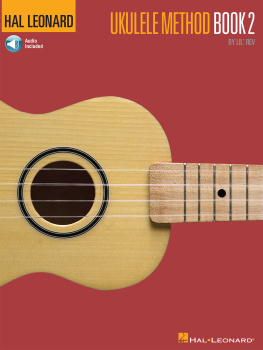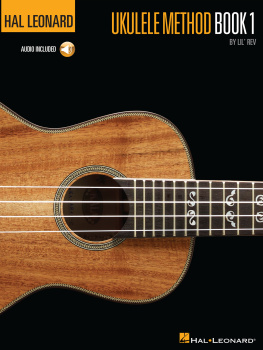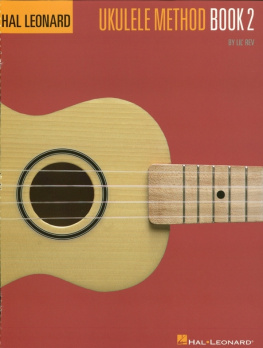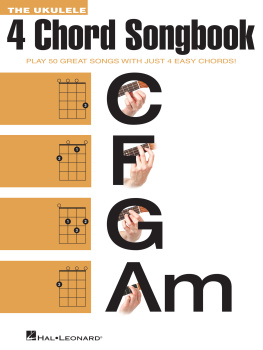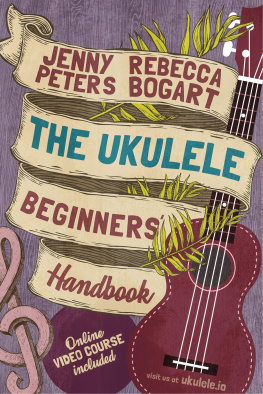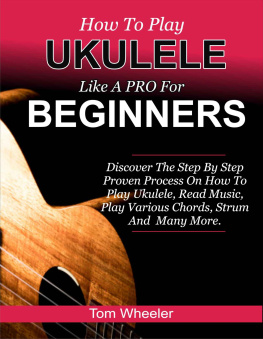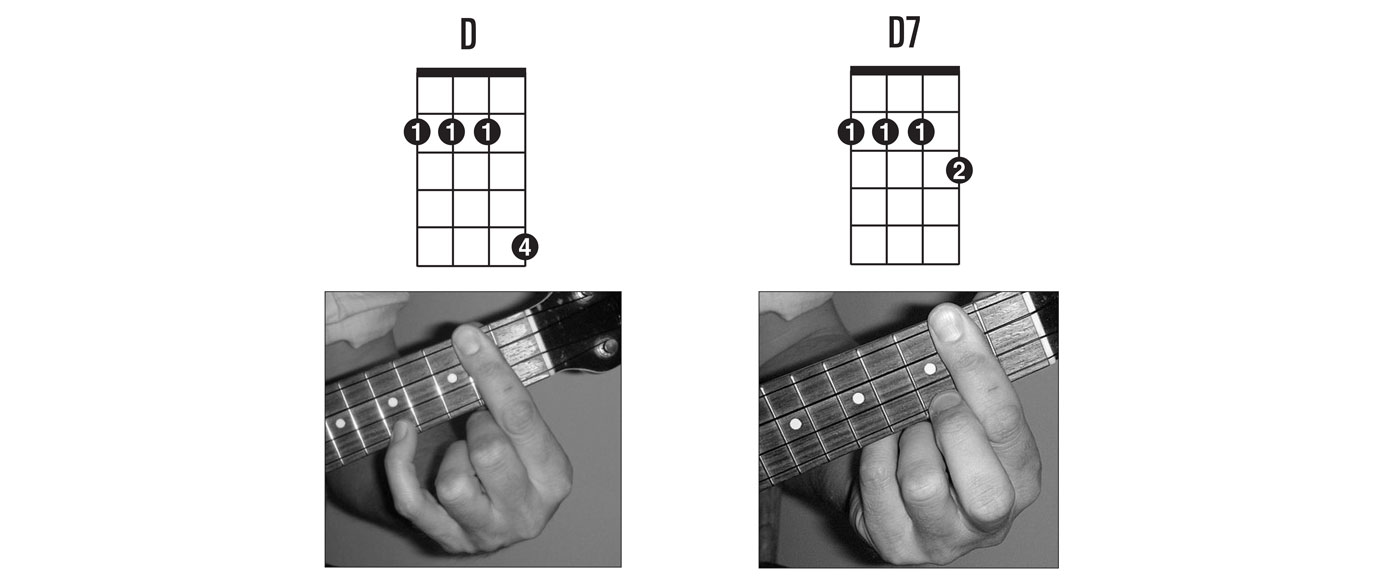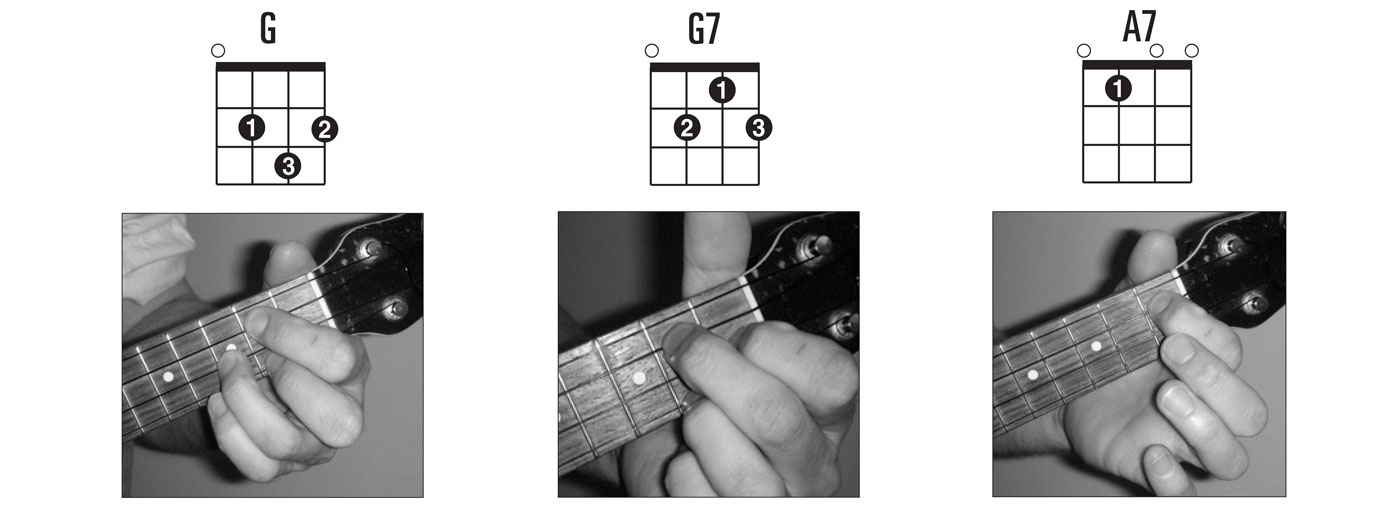
7777 W. Bluemound Rd. P.O. Box 13819 Milwaukee, WI 53213
For all works contained herein:
Unauthorized copying, arranging, adapting, recording, Internet posting,
public performance, or other distribution of the printed or recorded music
in this publication is an infringement of copyright.
Infringers are liable under the law.
Visit Hal Leonard Online at
www.halleonard.com
Contents
Introduction
Welcome to the Hal Leonard Ukulele Method Book 2. This follow-up to Book 1 emphasizes both melody playing and relatedright-hand techniques. After having completed the first book, you should now possess an understanding of how to tune theukulele, basic notation and tab reading, basic chords in the keys of C, F, G, E minor and D minor, simple melody playing, 3/4time, the single-roll stroke, and a growing repertoire of some standard melodies.
To build on this knowledge, Book 2 will carry you further into the wonderful world of uke-dom by helping to expand your chordand scale vocabulary. Ill teach you many new right-hand techniques, including the five-finger roll, ragtime strum, calypsostrum, and the much-revered triplet stroke, along with new chords, and hammer-ons and pull-offs for the fretting hand.
Well also learn about diminished and movable chords, how to play a boogie-woogie, Tin Pan Alley songs, dotted quarter notes,and 6/8 time, along with minor keys, 3/4 time, and much, much more.
As always, have fun! Practice and soon youll have everyone singingand smilingwith your love of the uke!
Aloha,
Lil Rev
About the Audio
The audio audio accompanying this book contains recordings of select exercises and tunes within the lessons. Your goal should be to learn the piece well enough to play along withthe recorded uke. Many examples have both chords and melodies written out, so you can play one part while the recorded ukeplays the other. Most of the tunes on the audio start with several measures of guitar accompaniment so you can get ready to playbefore the melodies begin as written.
Recorded at Velvet Sky, Milwaukee, WI
Engineered by Scott Finch
Performed by Lil Rev
About the Author
Lil Rev is a Milwaukee, Wisconsin-based award-winning multi-instrumentalist, writer, photographer, and music historian. He tours the U.S. teaching and performing original and traditional folk, blues, ethnic, and old-time music. To learn more about Lil Revs schedule, recordings, or programs, visit www.lilrev.com.
Special thanks to Jennifer Rupp.
Thanks to Will Branch for technical assistance.
The Key of D
The key of D has two sharped notes: F sharp and C sharp. The diagram shows where these notes appear on the fretboard nextto their neighboring natural notes.
Reminder: The sharp symbol ( A ) raises a note by one half step and the flat symbol ( D ) lowers a note by one half step.
Heres where the new notes appear on the musical staff.
Well begin with a D major scale. Play this slowly, one note for each foot tap.
Now lets try it in eighth notes. Remember, one quarter note equals two eighth notes, so play two notes for each tap of the foothere. Also notice that the top note of the scale is not repeated this time, so that the last note comes out on beat 4.
Good. Now, lets try a very simple melody from Pachelbels Canon in D. Nothing but half notes here. Each note lasts for twobeats. Dont rush!
Key of D Exercises
Great! Now, lets play something that moves around a bit. Be careful and play this slowly at first. Watch how it leaps fromstring to string.
A simple nursery song, yes, but watch out for the rests and the eighth notes.
REPEATS
Repeat signs tell you to repeat everything that is between them. Play through the section once until you hit the secondrepeat sign, ( a ) then go back to the first repeat sign ( b ), play the section again, and continue to the end.
Lets play the D major scale again, this time using two eighth notes per pitch. Notice the repeat signs in this example. Playthrough the whole thing twice.
Start slowly with this melodic exercise, practicing it again and again until you can play it fast and smooth.
The D Chord Family
D, D7, G, G7, and A7 Chords
First, practice finding the chords above. Then say the name of each chord aloud as you practice these exercises, strumming slowly.
Lets go back and add a C chord!
Strum-along Tunes in D
Here is a medley of some fun tunes using the new D, G, and A7 chords. Each song is played through twice on the audio. Playthese songs at your own speed so you can hit the chord changes on time. Count 1, 2, 3, 4, putting the emphasis on 2 and4 as you strum.

